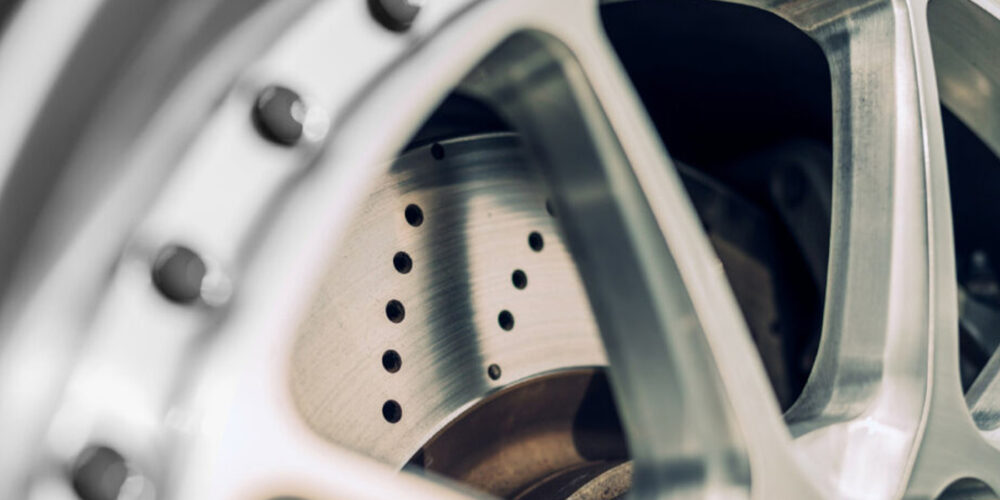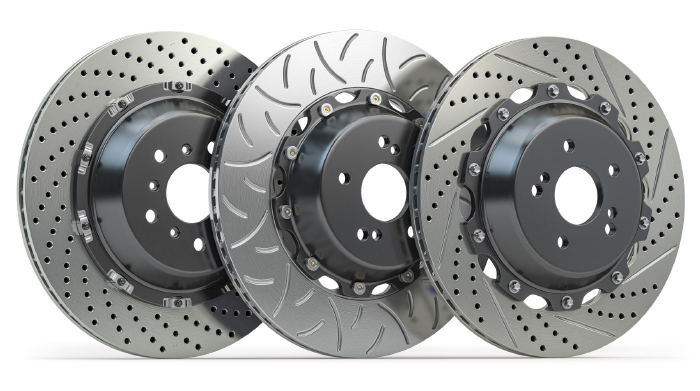A brake rotor absorbs and dissipates the heat energy generated by friction. How well the rotor can absorb and then release it into the surrounding air will determine the efficiency and capacity of the brakes.
The design of the rotor determines how it can handle the heat. On vented rotors, the thickness of the plates and how well air flows through the vanes helps to transfer heat to the surrounding air. Curved-vane designs on some vented rotors help to pull air through the center of the rotor to the outer edge and act as a pump. For curved vanes to work, they must be mounted on the hub in the correct direction, just as a directional tire must be mounted on the right wheel.
Slots cut into the face of the rotor have two functions. First, they provide leading edges for a better initial bite from the pad. Second, each groove provides a path for the gases being released by the pad. If the slots fill up with pad material, the brake system is operating at too high a temperature. Slots are radiused when milled to prevent stress in the rotor. Most slotted rotor manufacturers will not cut the slot to the edges of the rotor; doing so will compromise the strength of the rotor.
Holes drilled in the rotor can provide another path for the gases to escape from the pads and help with the initial bite of the pad. In some cases, the holes can reduce the weight of the rotor and improve cooling, as well. But there is a science to the holes, so the structure of the rotor is not compromised. Too many holes or holes near vanes can cause cracks. Also, the hole should have a chamfer to avoid creating a stress riser that can cause a crack.
The size of the brake rotor determines the rotor’s ability to generate brake force or torque. The best analogy is to try to turn a steering wheel using an inner spoke and then again using the outer wheel portion. The farther you move your hand out, the easier it is to turn the wheel.
Two-piece rotors included on some cars and in “big brake” kits have two advantages. First, two-piece rotors reduce rotational and unsprung mass. Second, the hat that is made of aluminum acts as a heat dam to prevent heat from being transferred to the hub, bearings and knuckle.
The most significant trend in rotors is using slots, holes and finishes on the hat and vanes to improve the cosmetics of the brake system.















